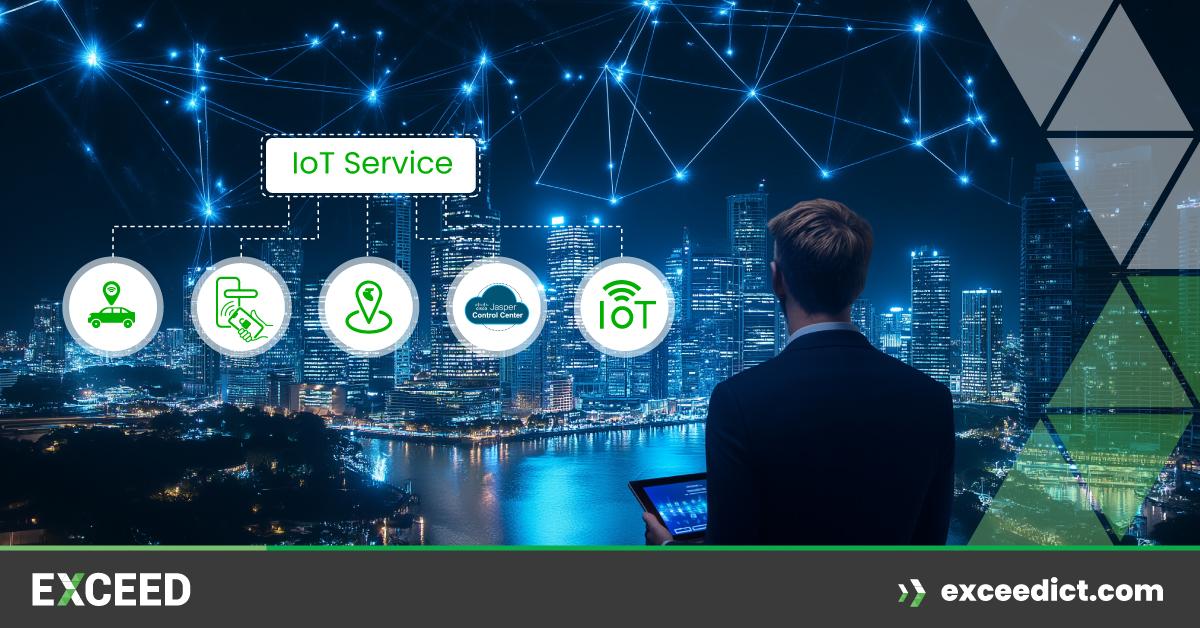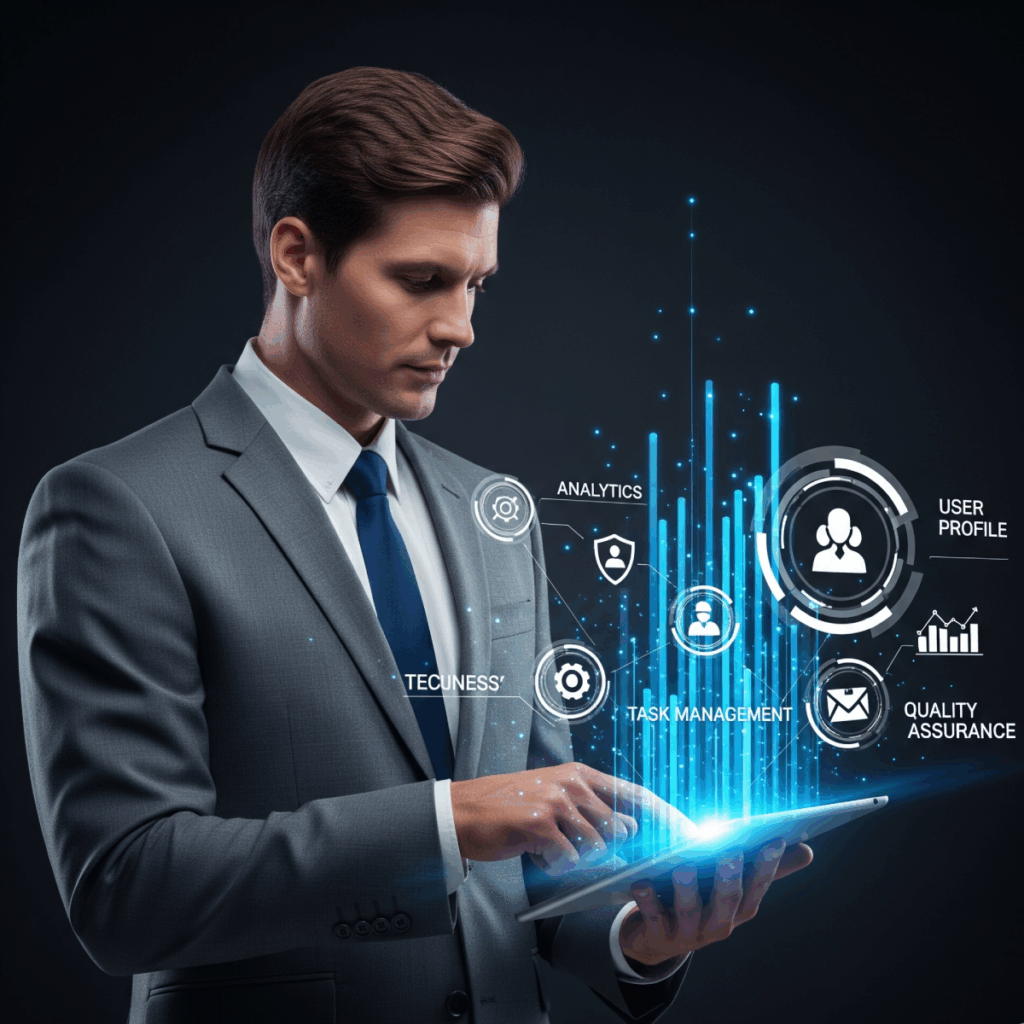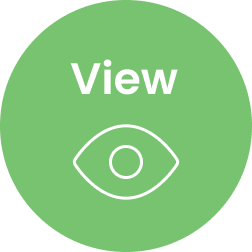
The Internet of Things (IoT) has transformed how businesses operate by enabling real-time data collection, automation, and smarter decision-making. From connected vehicles and sensor-equipped infrastructure to remote asset monitoring, IoT applications continue to evolve rapidly across various industries. But with so many devices, platforms, and technologies involved, implementing and managing IoT solutions can become overwhelmingly complex. This is where the right IoT service provider makes all the difference.
In this blog, we explore what an IoT service provider does, common challenges businesses face, and how EXCEED ICT simplifies the IoT journey for Australian organisations.
What Does an IoT Service Provider Do?

An IoT service provider offers end-to-end solutions that help businesses design, develop, deploy, and manage their IoT projects. These providers serve as partners throughout the entire lifecycle of an IoT solution.
Here’s what they typically deliver:
Strategy and Consulting
A good provider will help you define your IoT goals, assess potential use cases, and plan the rollout. This ensures that you’re not investing in technology for the sake of it, but rather to solve specific business problems.
Platform Development
They develop or manage IoT platforms that act as the backbone for your solution – handling data collection, device communication, and system integration.
Device Management
Managing a fleet of devices – including provisioning, configuration, firmware updates, and troubleshooting – requires the right tools and processes. Service providers help simplify this.
Connectivity Solutions
Whether through cellular, Wi-Fi, LPWAN, or satellite, your IoT solution needs stable and scalable connectivity. Providers ensure your data flows securely and reliably to your cloud or analytics system.
Data Analytics
Raw data is not useful on its own. Providers help convert device data into actionable insights using dashboards, reports, and AI-powered analytics.
Application Development
Some use cases demand tailored applications, such as mobile apps for field workers or dashboards for operations managers. Providers can develop these in line with your specific business needs.
Cybersecurity
Security is a growing concern in IoT environments. Service providers help secure devices, data transmissions, and access to systems to comply with regulations and best practices.
Support and Maintenance
Reliable service providers offer ongoing support, updates, and performance monitoring to ensure your solution remains functional and secure.
Challenges Australian Businesses Face with IoT
While the potential of IoT is vast, many organisations in Australia struggle with its implementation. Here are some common hurdles:
Fragmented Systems: Multiple device types and software platforms often don’t communicate well.
Data Overload: Businesses collect data but lack the tools or expertise to interpret it.
Security Risks: Many organisations are concerned about how to secure data flowing from thousands of endpoints.
Compliance Issues: With evolving data protection laws, managing compliance becomes difficult without the right partner.
Lack of In-house Capability: IoT projects often require skills outside traditional IT, such as embedded systems, cloud integration, and sensor networks.
How EXCEED ICT Simplifies the IoT Journey
 EXCEED ICT addresses these challenges by offering a single point of contact for complete IoT project delivery and management. Here’s how we simplify IoT for Australian businesses:
EXCEED ICT addresses these challenges by offering a single point of contact for complete IoT project delivery and management. Here’s how we simplify IoT for Australian businesses:
Unified IoT Management Platform
We consolidate all your IoT devices, data, and dashboards into one centralised platform. This provides a single source of truth and simplifies decision-making across departments.
Tailored Solutions for Your Industry
Our experience spans a range of sectors, from transport and logistics to local government and utilities. Whether you’re managing a vehicle fleet or monitoring flood-prone infrastructure, we can customise a solution to suit.
Cisco Control Centre Integration
Through our partnership with Cisco, we help clients manage complex connected devices such as:
Smart meters
Connected vehicles
Home automation and security systems
Local Support and Expertise
As an Australian-based company, EXCEED ICT understands local regulatory environments and infrastructure challenges. Our team works closely with clients to ensure that each solution is designed to scale and remain compliant.
Real-World Applications Delivered by EXCEED ICT
Our IoT solutions are already making a difference across Australia. Here are just a few examples:
Vehicle Telematics: Track and manage fleet performance in real time. Monitor driver behaviour, fuel efficiency, compliance with road safety standards, and vehicle health.
Stormwater Management: Deploy sensors to monitor water levels, debris, and flow rates in storm drains and waterways. This reduces unnecessary maintenance visits and helps prevent flooding.
Waste Intelligence: Use smart bins equipped with sensors to monitor fill levels and optimise collection schedules. This improves operational efficiency and reduces environmental impact.
FloodFinder: Install environmental sensors to predict flooding and improve emergency response. Our system detects data changes affected by rainfall and debris to warn of emerging risks early.
Why Choose EXCEED ICT as Your IoT Service Provider?
When selecting an IoT service provider in Australia, you should be looking for more than just technology. You need a partner who understands your business, delivers measurable results, and adapts with your needs.
Here’s why EXCEED ICT stands out:
End-to-End Service – From consultation to deployment and support, we manage every stage.
Industry-Specific Knowledge – Solutions designed for real-world challenges across multiple sectors.
Trusted Partnerships – We work with global leaders like Cisco and local organisations to deliver robust solutions.
Focus on Simplicity – We help you cut through complexity and make IoT easy to understand and manage.
Scalable and Secure – Future-proof infrastructure that grows with your organisation while maintaining security and compliance.
What to Look for in an IoT Service Provider: A Quick Checklist
Proven experience with end-to-end IoT delivery
Ability to customise solutions for your industry
Data security expertise and local compliance knowledge
Local support and responsiveness
Integration capabilities with your existing systems
Transparent pricing and long-term support
Final Thoughts
The success of your IoT project depends not only on the technology but also on the capabilities of the service provider you choose. At EXCEED ICT, we understand the Australian business landscape and are committed to helping you unlock the full potential of IoT – with clarity, control, and confidence.
If you’re ready to transform your operations and gain smarter insights, it’s time to work with a team that can bring it all together.
Speak to EXCEED ICT today and discover how we can help simplify your IoT journey.
Call us on 1300 832 639 or simply search “Exceed ICT” on Google Maps to find a location near you and connect with our team today.
With our award-winning expertise and dedication, we guarantee efficient management of your IoT services.


